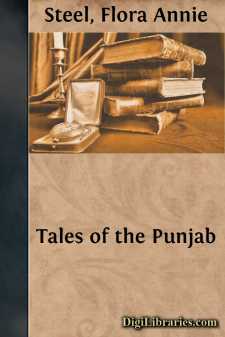Categories
- Antiques & Collectibles 13
- Architecture 36
- Art 48
- Bibles 22
- Biography & Autobiography 813
- Body, Mind & Spirit 142
- Business & Economics 28
- Children's Books 17
- Children's Fiction 14
- Computers 4
- Cooking 94
- Crafts & Hobbies 4
- Drama 346
- Education 46
- Family & Relationships 57
- Fiction 11829
- Games 19
- Gardening 17
- Health & Fitness 34
- History 1377
- House & Home 1
- Humor 147
- Juvenile Fiction 1873
- Juvenile Nonfiction 202
- Language Arts & Disciplines 88
- Law 16
- Literary Collections 686
- Literary Criticism 179
- Mathematics 13
- Medical 41
- Music 40
- Nature 179
- Non-Classifiable 1768
- Performing Arts 7
- Periodicals 1453
- Philosophy 64
- Photography 2
- Poetry 896
- Political Science 203
- Psychology 42
- Reference 154
- Religion 513
- Science 126
- Self-Help 84
- Social Science 81
- Sports & Recreation 34
- Study Aids 3
- Technology & Engineering 59
- Transportation 23
- Travel 463
- True Crime 29
Tales of the Punjab
Description:
Excerpt
Many of the tales in this collection appeared either in the Indian Antiquary, the Calcutta Review, or the Legends of the Punjab. They were then in the form of literal translations, in many cases uncouth or even unpresentable to ears polite, in all scarcely intelligible to the untravelled English reader; for it must be remembered that, with the exception of the Adventures of Raja Rasâlu, all these stories are strictly folk-tales passing current among a people who can neither read nor write, and whose diction is full of colloquialisms, and, if we choose to call them so, vulgarisms. It would be manifestly unfair, for instance, to compare the literary standard of such tales with that of the Arabian Nights, the Tales of a Parrot, or similar works. The manner in which these stories were collected is in itself sufficient to show how misleading it would be, if, with the intention of giving the conventional Eastern flavour to the text, it were to be manipulated into a flowery dignity; and as a description of the procedure will serve the double purpose of credential and excuse, the authors give it,—premising that all the stories but three have been collected by Mrs. F. A. Steel during winter tours through the various districts of which her husband has been Chief Magistrate.
A carpet is spread under a tree in the vicinity of the spot which the Magistrate has chosen for his darbâr, but far enough away from bureaucracy to let the village idlers approach it should they feel so inclined. In a very few minutes, as a rule, some of them begin to edge up to it, and as they are generally small boys, they commence nudging each other, whispering, and sniggering. The fancied approach of a chuprâsî, the 'corrupt lictor' of India, who attends at every darbâr, will however cause a sudden stampede; but after a time these become less and less frequent, the wild beasts, as it were, becoming tamer. By and by a group of women stop to gaze, and then the question 'What do you want?' invariably brings the answer 'To see your honour' (âp ke darshan âe). Once the ice is broken, the only difficulties are, first, to understand your visitors, and secondly, to get them to go away. When the general conversation is fairly started, inquiries are made by degrees as to how many witches there are in the village, or what cures they know for fever and the evil eye, etc. At first these are met by denials expressed in set terms, but a little patient talk will generally lead to some remarks which point the villagers' minds in the direction required, till at last, after many persuasions, some child begins a story, others correct the details, emulation conquers shyness, and finally the story-teller is brought to the front with acclamations: for there is always a story-teller par excellence in every village—generally a boy.
Then comes the need for patience, since in all probability the first story is one you have heard a hundred times, or else some pointless and disconnected jumble. At the conclusion of either, however, the teller must be profusely complimented, in the hopes of eliciting something more valuable. But it is possible to waste many hours, and in the end find yourself possessed of nothing save some feeble variant of a well-known legend, or, what is worse, a compilation of oddments which have lingered in a faulty memory from half a dozen distinct stories. After a time, however, the attentive collector is rewarded by finding that a coherent whole is growing up in his or her mind out of the shreds and patches heard here and there, and it is delight indeed when your own dim suspicion that this part of the puzzle fits into that is confirmed by finding the two incidents preserved side by side in the mouth of some perfectly unconscious witness. Some of the tales in this volume have thus been a year or more on the stocks before they had been heard sufficiently often to make their form conclusive.
And this accounts for what may be called the greater literary sequence of these tales over those to be found in many similar collections. They have been selected carefully with the object of securing a good story in what appears to be its best form; but they have not been doctored in any way, not even in the language. That is neither a transliteration—which would have needed a whole dictionary to be intelligible—nor a version orientalised to suit English tastes....


